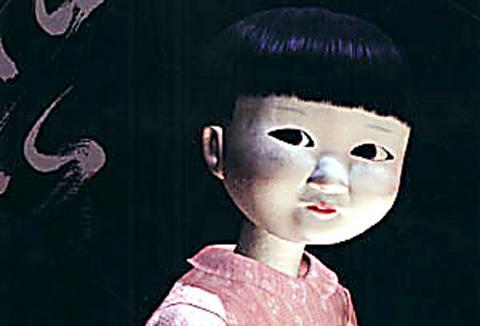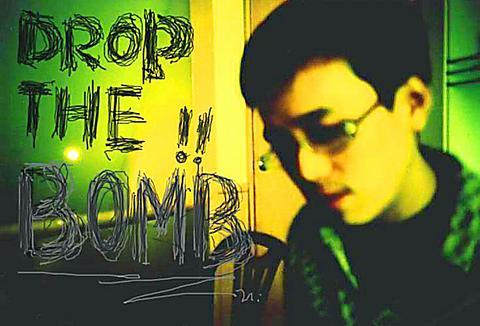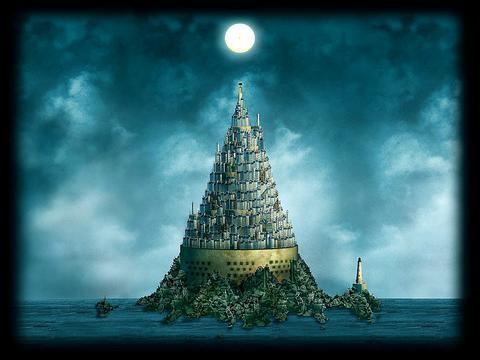Competition in the Digital Shorts category of the Golden Horse Film Festival began last night with screenings of Taiwanese and -- this year for the first time -- international entrants.
Competition films are shown in four groups and will be screened until Tuesday, when the winners will be announced at Warner Village.
The Digital Shorts section is one of the festival's newest projects, having started three years ago with competition limited to Taiwanese short films. This year, the competition was opened to foreign filmmakers and saw over 300 entries. After the initial selection, locally made short films accounted for eight of the 34 competing films.

The use of digital technology in the production of the films and their short length -- most clock in at less than 10 minutes -- make the category one of the more interesting features of the festival, showcasing a range of styles that would become unwieldy or simply unwatchable in a feature-length film. Some of the films stylistically resemble music videos, while others give the impression of being video art projects.
With low-cost digital editing and film technology widely available, the category also opens itself to students and semi-professional filmmakers, which is apparent in the selections for this year's competition.
Digital Shorts highlights

Carnt Sleep
by Owen Oppenheimer
A young man and woman spend a sleepless night alone in adjacent rooms, tossing and turning from their mutual desire for each other that they for some reason haven't expressed. With a split screen, we can see the action in both rooms as the two squirm in discomfort over their repressed emotions and eventually lash out.

Showa Shinzan
by Reiko Loader
Shot with a mixture of archive World War II footage and animation, this film tells the story of a mysterious old man from the perspective of his granddaughter. The man is surveying a volcano in Hokkaido that threatens his town and his warnings to authorities go unheeded, which sets the stage for a natural calamity to compound the hardships already brought on by the war.

Down
by Frank Brandstetter
This is a haunting, silent, slow-motion video of a girl standing in an idyllic meadow, where, as the camera pans out, toys and other objects on the ground around her shoot into the sky. The footage is shown in reverse, until the end, when a camera trick turns notions of time and space on their heads.

His-men Street
by Lin Yu-hsien
A DJ, a skateboarder, a dancer and a graffiti artist are portrayed in this documentary-style look at underground youth culture in Taipei. They have their own stories of alienation and confusion but a common link to the city's growing urban counter culture. This film finally unmasks the artist behind the cartoon faces stenciled on so many of Taipei's electric switch boxes.
Otsu
by Lucas Valerie
A fun animation featuring a mad scientist bearing an uncanny resemblance to Einstein living amid dreary heaps of machinery, who is awakened, so to speak, to the outside world by an apple falling on his head, in a reference to Isaac Newton. Wishing to discover where the apple came from, the scientist constructs a helicopter-like pod and flies upward, where, a colorful, dazzling surprise awaits him.

That US assistance was a model for Taiwan’s spectacular development success was early recognized by policymakers and analysts. In a report to the US Congress for the fiscal year 1962, former President John F. Kennedy noted Taiwan’s “rapid economic growth,” was “producing a substantial net gain in living.” Kennedy had a stake in Taiwan’s achievements and the US’ official development assistance (ODA) in general: In September 1961, his entreaty to make the 1960s a “decade of development,” and an accompanying proposal for dedicated legislation to this end, had been formalized by congressional passage of the Foreign Assistance Act. Two

Despite the intense sunshine, we were hardly breaking a sweat as we cruised along the flat, dedicated bike lane, well protected from the heat by a canopy of trees. The electric assist on the bikes likely made a difference, too. Far removed from the bustle and noise of the Taichung traffic, we admired the serene rural scenery, making our way over rivers, alongside rice paddies and through pear orchards. Our route for the day covered two bike paths that connect in Fengyuan District (豐原) and are best done together. The Hou-Feng Bike Path (后豐鐵馬道) runs southward from Houli District (后里) while the

March 31 to April 6 On May 13, 1950, National Taiwan University Hospital otolaryngologist Su You-peng (蘇友鵬) was summoned to the director’s office. He thought someone had complained about him practicing the violin at night, but when he entered the room, he knew something was terribly wrong. He saw several burly men who appeared to be government secret agents, and three other resident doctors: internist Hsu Chiang (許強), dermatologist Hu Pao-chen (胡寶珍) and ophthalmologist Hu Hsin-lin (胡鑫麟). They were handcuffed, herded onto two jeeps and taken to the Secrecy Bureau (保密局) for questioning. Su was still in his doctor’s robes at

Mirror mirror on the wall, what’s the fairest Disney live-action remake of them all? Wait, mirror. Hold on a second. Maybe choosing from the likes of Alice in Wonderland (2010), Mulan (2020) and The Lion King (2019) isn’t such a good idea. Mirror, on second thought, what’s on Netflix? Even the most devoted fans would have to acknowledge that these have not been the most illustrious illustrations of Disney magic. At their best (Pete’s Dragon? Cinderella?) they breathe life into old classics that could use a little updating. At their worst, well, blue Will Smith. Given the rapacious rate of remakes in modern